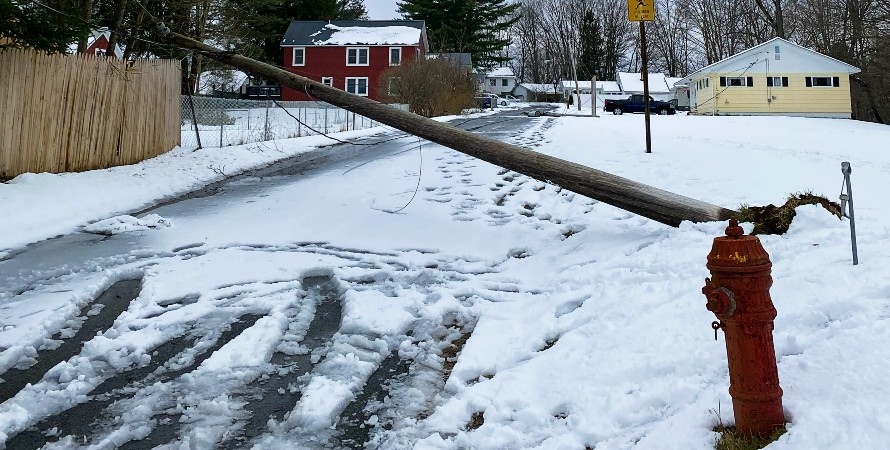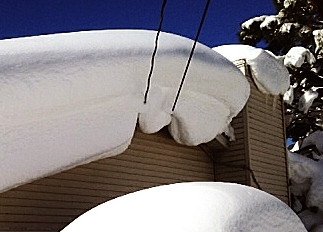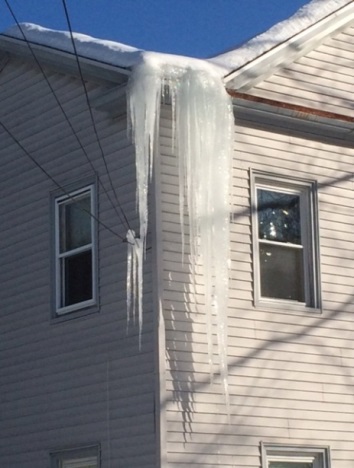National Grid Restores Power to 99% of Central and Northern New York Customers Impacted by Multi-Day Blizzard
Categories:

National Grid crews have successfully restored power to 48,200, or 99 percent, of the nearly 48,700 customers impacted by the powerful blizzard that slammed portions of central and northern New York through today. Crews have worked around the clock since Friday in very challenging weather conditions, including up to three feet of heavy, wet snow along with gale-force winds, whiteouts and impassable roads. Among the hardest-hit regions in central and northern New York were Jefferson, Franklin and St. Lawrence counties.
“The remaining repairs are labor-intensive, primarily single-customer and isolated pockets of outages,” said Matt Barnett, National Grid’s Vice President of New York Electric Operations. “These outages take time, as they require us to move equipment and staff street-to-street and from island to island in the North Country.”
The company expects some outages in the hardest-hit areas, such as islands on the St. Lawrence River, could last longer than 48 hours after the storm subsides. Customers can check on the power restoration estimates for their specific addresses by logging into our Report or Check an Outage page.
“We thank all of our customers for their continued patience and understanding as we advance closer to completing service restoration. Our field force will remain active in the region until the last outage is resolved,” Barnett said. “On behalf of National Grid, I want to extend a special thanks to the police, fire, public works, municipal officials, and other volunteers for their ongoing assistance and for their support of our customers and communities during our storm recovery efforts.”
The company also offers the following important safety reminders for customers and snow removal contractors who are clearing snow near electricity and gas equipment.
Electricity Safety
- The photos below illustrate how snow and ice accumulation on roofs can place a burden on electricity service wires - also known as the weatherhead - that bring energy into the home.
These wires are live and are a potential hazard to anyone attempting to clear snow.
As snow and ice are removed, inspect the connection point from a safe distance to be sure that it hasn’t been pulled away from the house, which would create a potential fire hazard.


National Grid also reminds home and building owners to be especially cautious as they work to clear snow and ice by following these safety recommendations:
- Stay at least 10 feet away from overhead power lines at all times.
- Keep all ladders, shovels, roof rakes and other devices well clear of any lines coming from the street to the structure, regardless of the material the equipment is made from. In extremely wet conditions, even wood can conduct electricity.
- Start clearing snow from the opposite end of the roof from the service point where electricity is delivered.
- The buildup of ice and snow around or over natural gas meters, regulators and pipes can pose a serious safety risk. Ice and snow falling from a roof can damage gas meters or service connections to customers’ homes or businesses, resulting in potential gas leaks. Customers should take immediate action if a natural gas leak is suspected:
- Get out – All occupants should leave the house immediately. Do not use the telephone, light switches or automatic garage door openers for any reason.
- Call us – After leaving the house and reaching a safe environment, call National Grid’s 24-hour gas emergency number: 1-800-892-2345.
- Stay out – Don’t return to your home until National Grid tells you it is safe to do so.
- Cleared snow should never be piled around vents. A blocked vent can lead to the buildup of deadly carbon monoxide.
- The symptoms of carbon monoxide poisoning are similar to those of the flu, and can include headaches, weakness, confusion, chest tightness, skin redness, dizziness, nausea, sleepiness, heart fluttering or loss of muscle control. If you suspect carbon monoxide is present in your home, immediately go outside and breathe deeply. Then call 911.
- When clearing snow, customers and snow removal contractors should be aware of the location of natural gas equipment to avoid coming into contact with meters, hitting outside gas risers, or piling snow around vents mounted on the outside of buildings, which can cause the dilemma illustrated below:
Electricity & Generator Safety
- If a power outage occurs, customers can notify National Grid online to expedite restoration.
- Generators used to supply power during an outage must be operated outdoors to prevent the buildup of deadly carbon monoxide. Before operating a generator, be sure to disconnect from National Grid’s system by shutting off the main breaker, located in the electric service panel. Failure to do this could endanger our crews and your neighbors.
- Customers who depend on electrically powered life support equipment, such as a respirator, should register as a life support customer by calling National Grid at 1-800-642-4272. In a medical emergency, always dial 911.
- Keep working flashlights and an extra supply of batteries in your home and be sure to charge all electronic devices.
- Please use caution when driving near emergency responders and crews restoring power.
- Be sure to check on elderly family members, neighbors and others who may need assistance during an outage.
Safety Near Downed Power Lines
- Always use extreme caution near downed power lines and wires, and always assume that they are carrying live electricity.
- Never touch a person or an object that is in contact with a downed line, as electricity can pass through to you.
- Take caution when approaching fallen trees, which could have power lines caught in them.
- Remember that water can conduct electricity. If you see a line down in a puddle or flooded area, avoid contact with the water to prevent risk of shock.
Learn more about downed power line safety at our website
Stay Informed and Connected
- Customers with active electricity accounts who text ‘REG’ to 64743 can have personalized alerts sent to them via text, email or phone call when we detect an outage on their properties.
- Customers also can text ‘OUT’ to 64743 to report an outage.
- For real-time power outage information, online outage reporting, and in-depth storm safety information, visit National Grid’s Outage Central website. Customers who create an online profile also can sign up for email alerts.
- Customers can read the latest company news, check outage status and report an outage by using the National Grid app.
- Visit our website: www.nationalgridus.com, follow us on Twitter and friend us on Facebook.
- Click here for details on the company’s storm preparation and restoration process.
About National Grid
Media Contacts
Related News
